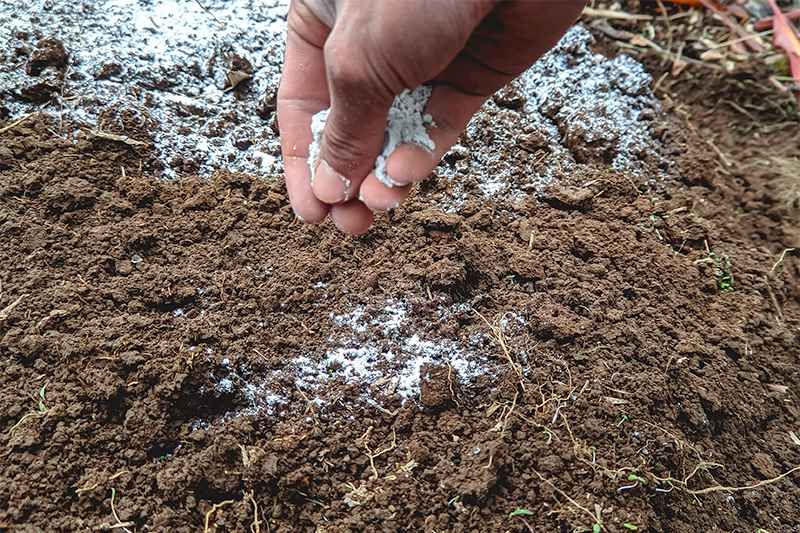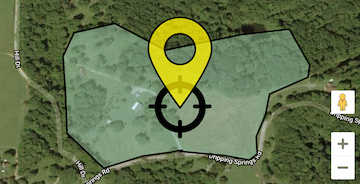Know Your Soil pH and Fix It With Dolomitic Lime

By Kent Kammermeyer, Senior Wildlife Biologist
“Got lime?” Yep, this is my first question for the hunter on the phone who wants to know what to plant in his deer food plots. If the answer is “no,” my response to the caller switches to Plan B and we end up talking about rye, ryegrass, wheat, crimson clover or birdsfoot trefoil. Not bad plantings for deer, but not the quality or production of alfalfa, ladino clover, oats, red clover, grain sorghum or corn (which can’t be grown effectively in low pH). As a matter off act, if the answer were “yes,” you could not only grow both the Plan A & B crops, you could come close to doubling their production in lbs./acre and greatly increasing their protein and digestibility.
Lots of folks like to take shortcuts, travel the easy road and get it done fast. I was one of those people, when it came to deer plots, until I learned the hard way, 25 years ago, that we had to have lime to grow anything other than KY31 toxic fescue in our food plots in Northeast Georgia. Our soil tests were showing pH levels from 4.8 to 5.2 (extremely acidic) and recommending three to five tons of dolomitic (also called agricultural lime because it contains both calcium and magnesium) limestone/acre! Twenty-five years later, we are still putting out over 400 tons of agricultural lime/year with two of our own lime trucks as needed on parts of our 900 acre food plot system on 14 WMAs. Each field gets soil tested at least once every three years in the mid-summer; we get results back from our University extension service soil testing lab and follow their recommendations for liming. Actually, from experience and advice from agronomist Dr. Bill Sell (who used to run the soil testing lab), we put out a ton/acre more than the recommendations suggest. If our test shows two tons needed, we apply three. There is no doubt in my mind that lime is the backbone of our clover plot program. Without it, we would be sunk. Why? Acidity is the number one soil problem in the entire Eastern U.S. Past loss of topsoil, native acidity of woodland soils and intensive use of croplands have all contributed to increased soil acidity. Nitrogen fertilizers, crop removal and the loss of calcium and magnesium by leaching all combine to push soil pH downward. Why don’t farmers soil test and use adequate agricultural limestone? This is a great mystery. Agricultural lime is frequently called the biggest bargain available to farmers. Acid soil conditions are a result of high hydrogen ion concentration in the soil. If allowed to remain, the soil cannot hold necessary nutrients and plants can’t grow properly. Lime application causes hydrogen to be replaced by calcium and magnesium, which reduces the acidity. In turn, other nutrients (such as phosphorus) can easily displace some of the calcium and magnesium on the soil particle and be held for plant use. Usually crops not requiring heavy applications of nitrogen can go three to five years between lime applications. Less lime is needed to raise soil pH in a sandy soil than in a clay soil.
Agricultural lime begins to work immediately upon contact with acid soil. However, a full reaction may take as long as 12 to 24 months. Lime can be applied at any time of year, especially under dry spreading conditions and unbroken ground. Performance of lime is enhanced by applying well in advance of the growing season. Another consideration: most lime is spread by fertilizer dealers who have more time to apply it in the fall and winter. It is very important to incorporate lime into the top four to six inches of soil where it is available uniformly to the plant root systems. Lime does not move downward quickly in the soil profile.
Besides supplying calcium and magnesium, which neutralizes soil acidity (increases soil pH), lime also promotes desirable bacterial activity in the soil, improves organic matter decomposition and increases the plant’s ability to efficiently use fertilizer elements. Fertilizer without lime is about as effective as a deer rifle without bullets!
Most crops grow well at a soil pH of 6.0. However, to get even better performance (especially from legumes), we shoot for 6.5 or higher, which also increases the interval between lime applications by a couple of years or more - hence our rule of applying a ton more than extension service recommendations.
Other tips include using a spreader truck wherever possible for convenience and price. Spread lime costs $25-$35 per ton versus pelletized bag lime that costs $200 or more per ton, plus labor to spread it in a fertilizer distributor. Have you ever put out two tons of lime/acre using 100 40-lb. bags of pelletized lime in a 250 lb. fertilizer spreader? I have, and it’s no fun! I know hunters who have done it with a four-wheeler or even shoveled it out of the back of a pickup truck. If it has to be, it has to be, but try your best to locate your plots so they are accessible by lime truck and big enough to be worth a trip(two acres or better usually equals a minimum of four tons of lime on an eight ton capacity truck). Treat your agricultural lime truck dealer like your best buddy by making every effort to avoid getting his truck stuck or breaking its side view mirrors on narrow roads!
A word of caution: there is a product out there called liquid lime, often sold in 2½ gallon jugs. There are some extravagant, exaggerated testimonials out there claiming that this product is so concentrated that it is the equivalent of thousands of pounds of powdered agricultural lime. It’s not true! Don’t waste your money on liquid lime; it’s cost prohibitive to apply enough to correct soil pH over the long haul like agricultural lime does.
In summary, to get the most from your expensive seed and fertilizer (or even to get it to grow at all in many cases), apply lime according to soil tests or even higher than recommended. It will contribute to higher protein, higher production, better digestibility and eventually to better antlers. Lime is calcium, a major component of deer antlers. Believe me, it is far more important than salt licks!



